The Future of Necrobotics
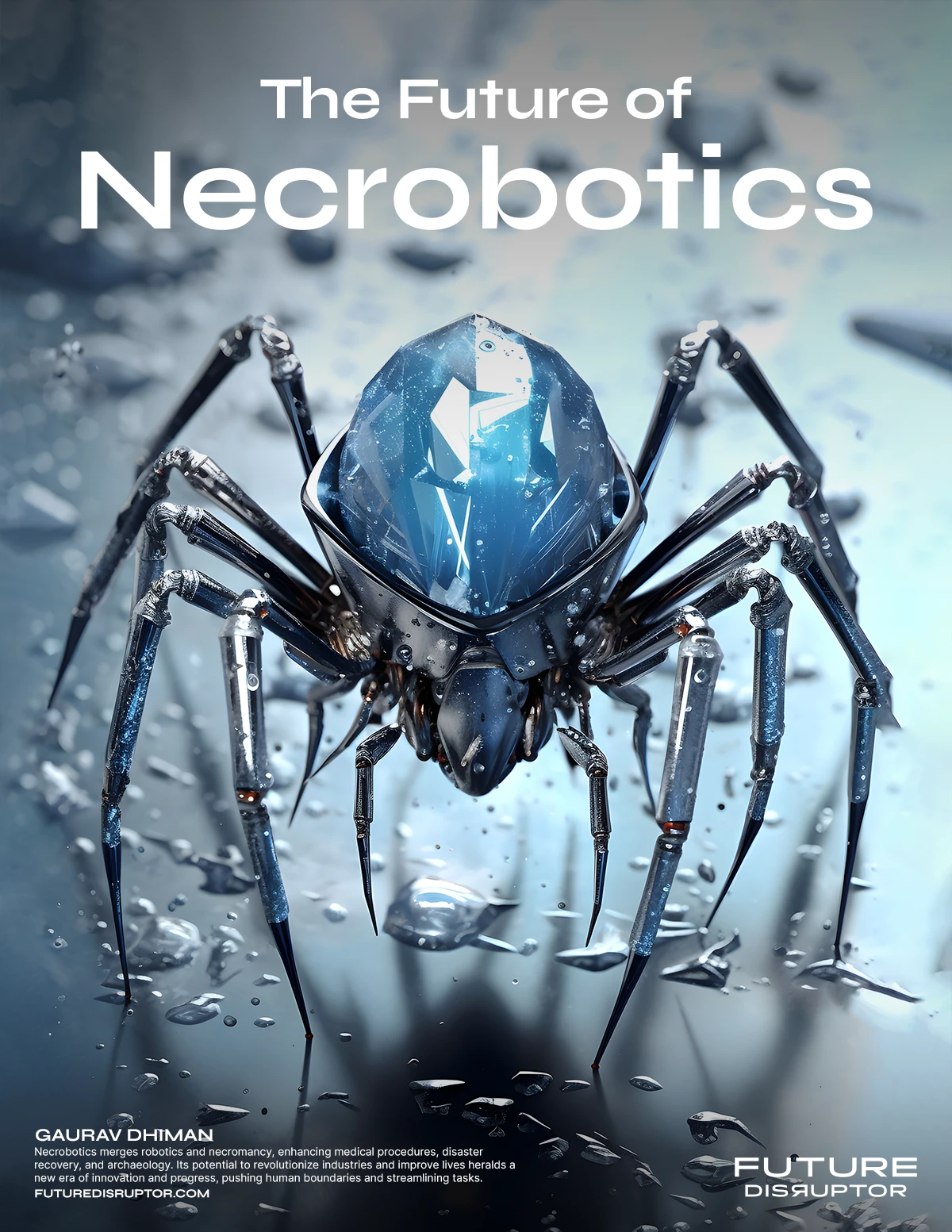
Necrobotics is a new and emerging field of robotics that uses biotic materials, or dead organisms, as robotic components. Imagine repurposing a spider’s leg as a gripper or a jellyfish’s bell as a bioreactor. These robots are called necrobots.
Necrobotics technology is still in its infancy and has a long way to go before it can be widely adopted and applied. It is a fascinating and controversial topic that may have some applications in the future.
Practical Applications
One of the practical applications of necrobotics is to use dead spiders as robotic grippers by applying pressurized air to activate their gripping arms. This way, they can avoid the challenges of designing and fabricating artificial grippers from scratch. The necrobotic spider gripper can lift small, light objects, offering an alternative to complex and costly small hydraulics mechanical grippers.
Another potential benefit of necrobotics is that it can reduce the wastage of robotics by using biodegradable materials instead of synthetic ones. Since biotic materials can decompose naturally, they can reduce the environmental impact of electronic waste.
Necrobotics is still a very new and experimental technology, so its future applications and implications are yet to be fully explored.
Importance for Our Future
Here are the reasons why necrobotics are important for our future:
- Sustainability and biodegradability: Unlike traditional robotics that heavily rely on synthetic materials, necrobotics utilizes naturally evolved, biodegradable ones. This reduces reliance on resource-intensive manufacturing and minimizes environmental impact during robot disposal. Imagine waste management robots built from chitinous insect exoskeletons or biodegradable drones constructed from bird feathers.
- Enhanced functionality and agility: Nature has spent millions of years perfecting intricate biological structures and mechanisms. Necrobotics offers the unique opportunity to leverage these built-in functionalities, such as the exceptional dexterity of spider legs or the precise flight control of bird wings. Robots built with these components could navigate challenging environments, perform delicate tasks, and adapt to different situations far more effectively than current models.
- Revolutionizing medical education and training: Necrobotics can provide realistic, ethically sourced platforms for medical students to practice surgeries, anesthesia procedures, and other delicate interventions. Imagine using preserved animal organs or tissues integrated with AI and augmented reality for immersive, interactive training sessions. This could dramatically improve medical skill development and patient outcomes.
- Disaster relief and exploration: With their inherent resilience and biodegradability, necrobotic robots could be deployed in hazardous environments like earthquake zones or radioactive waste sites. Their small size and low energy requirements make them ideal for navigating tight spaces and relaying crucial information without risking human lives. Furthermore, cyborg insects or bird-like constructs could be invaluable for search and rescue operations or disaster assessment.
- Ethical considerations and public perception: While the ethical implications of necrobotics need careful consideration, the field offers opportunities for the respectful utilization of deceased organisms. Ensuring informed consent, minimizing pain during tissue acquisition, and demonstrating scientific transparency will be crucial for public acceptance and ethical development of this technology.
How Does It Work?
Here are the basic steps of how necrobotics work with the example of a spider necrobot:
- Obtain a dead organism, in this case, a spider, and euthanize it using a cold temperature.
- Insert a needle into the main body of the organism and seal it with glue.
- Connect a syringe or pump to the needle and apply pressurized air to activate the limbs of the organism.
- Use the organism as a robotic gripper to lift small and light objects.
Necrobotics utilizes the natural hydraulic system of the organism and its compact structure to create an efficient and straightforward gripper system.

Evolve in the Future
Necrobotics has some potential advantages, such as using existing biological structures for specific functions and reducing the wastage of robotics using biodegradable materials.
However, necrobotics also faces some challenges and limitations, such as how to preserve the biotic materials so that they do not decay, how to integrate them with electronic devices and control systems, and how to address the social and moral concerns that may arise from using dead bodies for robotic purposes. Some people may find necrobotics to be disturbing or disrespectful. In contrast, others may wonder about the implications of using such technology in light of the definition and value of life and death.
Therefore, the future of necrobotics depends on how these challenges and concerns can be overcome and how the technology can be applied beneficially and ethically. Some possible applications of necrobotics are utilizing soft robotics and electrical stimuli to repurpose biotic material into biohybrid systems or using preexisting bone structures to house robotic components. However, the usage fields for necrobotics may be limited, as it is unlikely that they will be used for food production or surgical robotics. Necrobotics may also pose a potential threat as a tool for criminal activities in the far future when it advances further.
Help Organizations/Enterprises
Necrobotics can help organizations and enterprises in various ways, such as:
- Reduce the cost and complexity of designing and fabricating artificial grippers and other robotic parts using existing biological structures for specific functions.
- Reduce the environmental impact of robotics by using biodegradable materials instead of synthetic ones. Necrobots can decompose naturally and reduce the electronic waste generated by conventional robots.
- Explore new possibilities and applications of robotics by utilizing biotic materials’ unique features and capabilities.
Driving Adoption
Necrobotics technology adoption is driven by various factors, such as:
- There is potential for using existing biological structures for specific functions.
- The possibility of reducing the wastage of robotics by using biodegradable materials instead of synthetic ones.
- The curiosity and innovation of researchers and engineers who want to explore new and emerging fields of robotics.
Operational Challenges
Some of the challenges in operationalizing Necrobotics technology are:
- Preserve the biotic materials so they do not decay or lose their functionality over time.
- Integrate the biotic materials with electronic devices and control systems to function reliably and efficiently like a robot.
- Address the social and moral concerns of using dead bodies or parts of them for robotic purposes.
- Develop standardized protocols and guidelines for selecting, preparing, and disposing of biotic materials.
- Ensure the safety and security of the necrobotic systems from potential threats such as hacking, sabotage, or misuse.
Success Stories
Some of the success stories of necrobotics technology are:
- A team of engineers from Rice University won the 2023 Ig Nobel Prize for designing a robot arm that incorporated a dead spider as a gripper. The spider gripper could lift objects many times its weight and was biodegradable.
- Researchers from the University of Illinois Urbana-Champaign created a biohybrid robot that used skeletal muscle tissue and collagen structure to replicate the motions of land animals. The biohybrid robot could walk, run, and jump on different terrains.
- Scientists from the University of Bristol developed a necrobotic fish that used the skin and muscles of a dead fish to swim and maneuver in water. The necrobotic fish could mimic the natural movements and behaviors of living fish.
Types
There are different types of necrobotics depending on the source of the biotic materials and the purpose of the robots. Some examples are:
- Spider grippers: They use dead spiders as robotic grippers by applying pressurized air to activate their gripping arms. They can lift small, light objects and utilize the spider’s organic hydraulic system and compact legs.
- Insect drones: They use dead insects, such as flies or bees, as flying robots by attaching microelectronic devices and wireless controllers to their bodies. They can be used for surveillance, reconnaissance, or exploration.
- Animal cyborgs: They use dead animals, such as rats or dogs, as cyborgs by implanting electrodes and sensors into their brains and muscles. They can be controlled remotely or autonomously and perform navigation, detection, or attack tasks.
Advantages
Some of the advantages of necrobotics are:
- It can create novel and unique biohybrid systems, which combine the properties of living and non-living materials, such as softness, flexibility, adaptability, and durability.
- It can use existing biological structures for specific functions, such as gripping, sensing, or moving, without designing or fabricating them from scratch.
- It can reduce the wastage of robotics by using biodegradable materials, which can decompose naturally or be recycled after use.
Disadvantages
Here are a few disadvantages of necrobotics:
- Durability and maintenance: They are made of organic materials that can decay and lose functionality over time. They may require additional work and management to replace them if they fail.
- Integration and reliability: They must be integrated with electronic devices and control systems to function like robots. This may pose some technical challenges and affect the reliability and efficiency of the necrobotic system.
- Ethics and morality: They use dead organisms as robotic parts. This may raise some social and moral concerns among some people who may find it disturbing or disrespectful to use dead bodies for robotic purposes. It may also question the implications of necrobotics for the definition and value of life and death.
Ethical Concerns
Necrobotics raises ethical concerns about the value and respect of life and death. Some of the questions that may arise are:
- Is it morally acceptable to use dead organisms for robotic purposes?
- Does necrobotics violate the dignity and rights of the deceased organisms?
- How does necrobotics affect the perception and meaning of life and death?
- What are the potential risks and harms of necrobotics to humans, animals, and the environment?
Some people may find necrobotics to be disturbing or disrespectful to use dead bodies for robotic purposes. Others might wonder about the implications of using such technology in light of the definition and value of life and death. They also involve technical challenges, such as preserving the biotic materials, integrating them with electronic devices, and controlling them reliably.
Governance and Regulation
There is no definitive answer to how we can govern and regulate necrobotics, as it is still a very new and experimental field. However, some possible suggestions are:
- Establish a global or regional authority that oversees the development and deployment of necrobotics and sets the standards and norms for its ethical and responsible use.
- Create a legal framework that defines the rights and obligations of the necrobotic developers, users, and owners and protects the interests and dignity of the biotic materials and their sources.
- Developing a code of conduct or a set of best practices that guides the necrobotic researchers and practitioners on how to select, prepare, and dispose of the biotic materials and ensure the safety and security of the necrobotic systems.
- Promote public awareness and education on the benefits and risks and engage with the stakeholders and communities affected by or interested in its applications.
- Encourage innovation and collaboration among necrobotic researchers and practitioners and foster a culture of transparency and accountability for their work.
History
The history of necrobotics technology dates back to the early 21st century when advances in robotics and artificial intelligence paved the way to explore new applications in various domains. The field of necrobotics gained momentum with the growing interest in human augmentation and the desire to extend human capabilities beyond biological limits.
One of the first examples of necrobotics was the design of a robot arm that incorporated a dead spider as a gripper. This was done by a team of engineers from Rice University in 2022, who won the Ig Nobel Prize for their work, as highlighted in the success stories above. They demonstrated that the spider gripper could lift objects many times its weight and was biodegradable.
Another example of necrobotics was the creation of a biohybrid robot that used skeletal muscle tissue and collagen structure to replicate the motions of land animals. This was done by researchers from the University of Illinois Urbana-Champaign in 2022, who showed that the biohybrid robot could walk, run, and jump on different terrains.
A third example of necrobotics technology was the development of a necrobiotic fish that used the skin and muscles of a dead fish for swimming and maneuvering in the water. This was done by scientists from the University of Bristol in 2023, who showed that the necrobotic fish could mimic living fish’s natural movements and behaviors.
Tools and Services
Necrobotics technology tools and services are the products and applications that use biotic materials, or dead organisms, as robotic components. These products and applications are based on the concept and capability of necrobotics, which is the practice of using existing biological structures for specific functions. Some examples of necrobotics tools and services are:
- Necrobotic grippers: These devices use dead spiders as mechanical grippers and can lift objects that outweigh them. They are fabricated by inserting a needle into the spider’s body and applying air pressure to extend and contract its legs. Necrobotic grippers can be an alternative to complex and costly small mechanical grippers.
- Necrobotic sensors: These devices use dead insects as biosensors and can detect chemical or environmental stimuli. They are fabricated by attaching electrodes to the insect’s antennae or other sensory organs and measuring the electrical signals generated by the insect’s nervous system. They can serve as an alternative to synthetic or engineered biosensors.
- Necrobotic actuators: These devices use dead muscles to generate force or movement. They are fabricated by applying electrical stimulation to the muscle fibers, causing them to contract or relax. They can serve as an alternative to artificial or synthetic muscles.
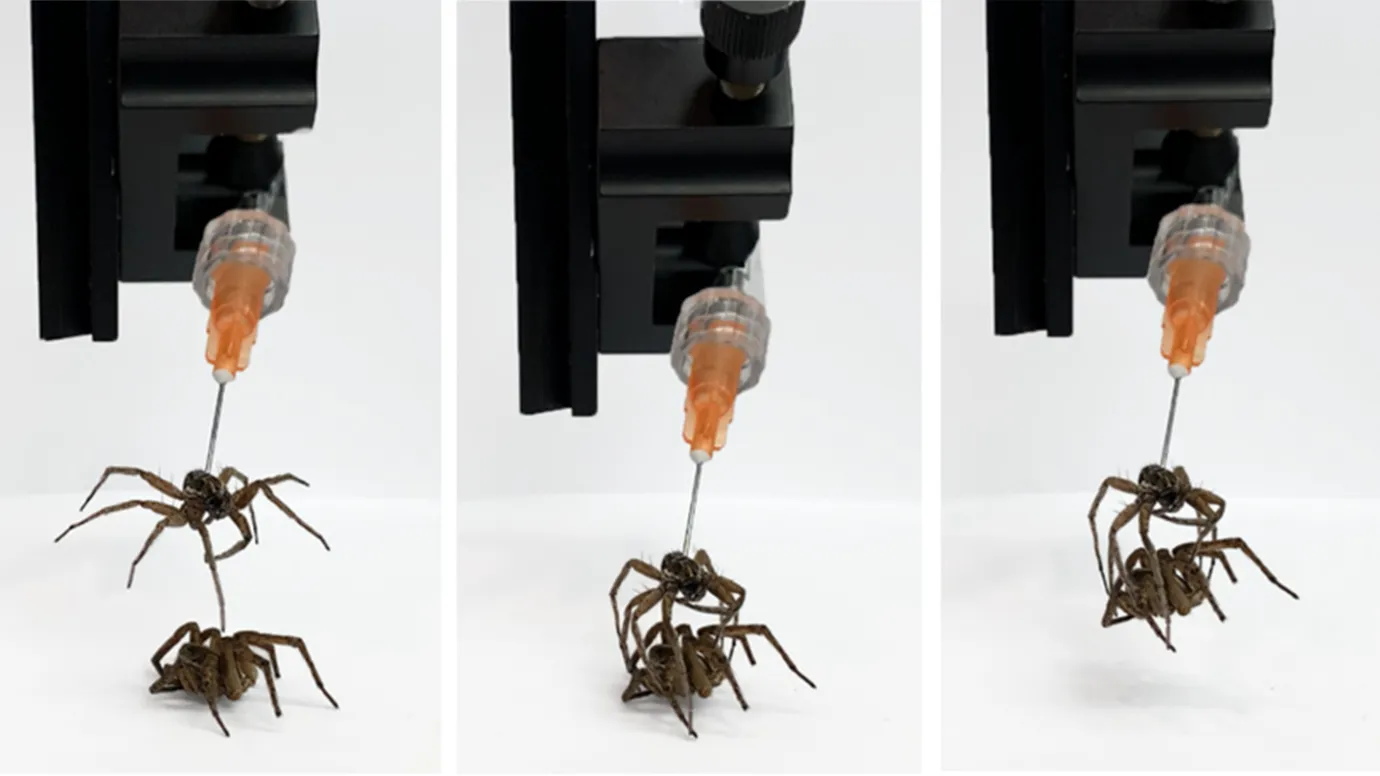
How to Get Started?
You can get started with robotics by learning the following from the resources highlighted in the Learn More section below.
- Select and prepare biotic materials for necrobotic applications, such as dead spiders, insects, or plants.
- Design and fabricate necrobotic systems using electronic components, such as microcontrollers, sensors, actuators, and batteries.
- Control and program necrobotic systems using Arduino, Python, or MATLAB software.
- Test and evaluate necrobotic systems using various methods, such as performance metrics, user feedback, or ethical analysis.
Best Practices
Some of the best practices for getting the most from necrobotics technology are:
- Choose biotic materials with suitable structures and functions for the desired robotic tasks.
- Preserve the biotic materials so that they do not decay over time. This can be done by applying special treatments and storage conditions, such as freezing, drying, or coating.
- Integrate the biotic materials with electronic devices and control systems that can manipulate them effectively and reliably. This can be done by using needles, wires, sensors, actuators, or other components.
- Consider the ethical and social implications of using necrobotics technology. This can be done by following the relevant laws and regulations, respecting the dignity and rights of the dead organisms, and communicating the benefits and risks of the technology to the public.
Related Terms
Some of the terms related to necrobotics are:
- Necrobot: A robot that uses biotic materials, or dead organisms, as robotic components. Necrobots can be classified into different types based on the source and purpose of the biotic materials, such as spider grippers, insect drones, or animal cyborgs.
- Biotic material: The biological material obtained from a dead organism and integrated into a robotic framework. Biotic materials can be selected based on their natural properties, such as hydraulic systems, compact structures, or sensory capabilities.
- Necromancy: The practice of using witchcraft to reanimate dead people or to tell the future by communicating with them. The term “necrobotics” comes from the words “necromancy” and “robotics”.
- Hybrid system: A system that combines two or more different types of components, such as biological and mechanical, to achieve a desired functionality. Necrobotics is an example of a hybrid system that leverages the advantages of both biotic and robotic elements.
- Ethical concern: The moral or ethical issue that arises from necrobotics, such as the respect for life and death, the potential misuse of the technology, or the social and environmental impact.
Learn more
Research Papers
- An Introduction to Necrobotics: Concept, Architecture, Use Cases, Challenges, Future Directions by Partha Pratim Ray: This paper provides a comprehensive overview of necrobotics, from its concept and design to its applications and ethical issues.
- Necrobotics: Biotic Materials as Ready-to-Use Actuators by Faye Yap et al: This paper demonstrates how a dead spider can be repurposed as a robotic gripper using soft robotics and pneumatic actuation.
Articles
- Necrobotics: Dead Spiders Reincarnated as Robot Grippers by Evan Ackerman: This article describes how researchers at Rice University used dead spiders as pneumatic grippers by applying pressurized air to their limbs.
- Scientists are turning dead spiders into robots, the tech is called Necrobotics by Times Now News: This article summarizes the work of Rice University researchers and explains the potential applications of necrobotics in various fields.
- Scientists Use Dead Spiders as Claw Machines by Smithsonian Magazine: This article explores the concept of necrobotics and its implications for the future of technology and biology.
- Necrobotics – Wikipedia by Wikipedia: This article briefly introduces necrobotics, its concept, architecture, use cases, and future directions.
Courses
- Robotics Specialization by University of Pennsylvania: This specialization consists of six courses that teach the fundamental concepts and algorithms of robotics, such as kinematics, motion planning, control, perception, and localization.
- Introduction to Robotics by Queensland University of Technology: This course introduces the principles and practices of robotics, such as robot design, sensors, actuators, programming, and navigation.
I hope you enjoyed this insightful discourse. I believe that open dialogue and diverse perspectives are essential for fostering a deeper understanding of complex issues. Therefore, encourage you to share your thoughts and opinions in the comments below. Engage with other readers, challenge assumptions, and contribute to a rich and meaningful discussion. Your insights are valuable, and welcome you to participate actively in this intellectual exchange.
Together, we can explore new ideas, expand our horizons, and generate fresh perspectives.

Learner-in-Chief at Future Disruptor. A futurist, entrepreneur, and management consultant, who is passionate about learning, researching, experimenting, and building solutions through ideas and technologies that will shape our future.
Subscribe to the Future Disruptor newsletter.

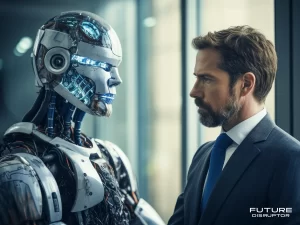

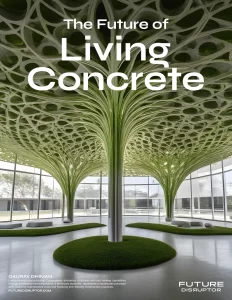

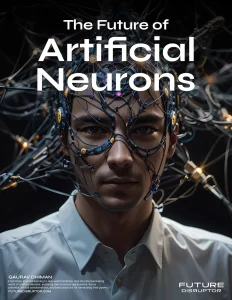
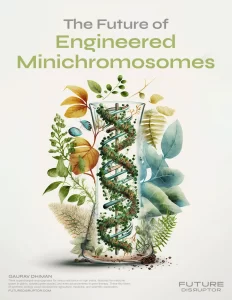
Leave a Reply